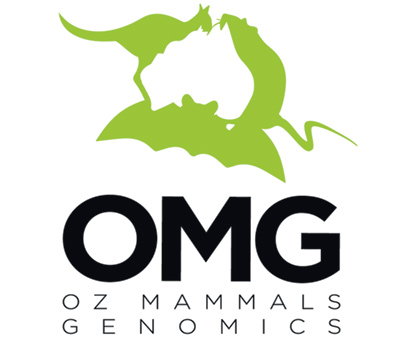Black-footed rock-wallaby conservation genomics
Conservation assessment of the black-footed rock wallaby: Understanding population structure to inform reintroductions and ongoing management
The black-footed rock wallaby (Petrogale lateralis) persists in multiple disjunct populations across much of the western half of Australia. This wide, but disjunct distribution, suggests that intervening populations must have been present prior to European settlement, a proposition supported by sub-fossil records from south-west WA. Since European settlement, the black-footed rock wallaby has greatly declined in the western deserts , parts of the central ranges and the south-west of Western Australia, remaining as a series of isolated subpopulations.
The varied and discontinuous habitats inhabited by BFRW has resulted in populations differentiating into at least five morphologically and/or genetically distinct forms: three named sub-species are recognised (P. l. lateralis, P. l. hacketti and P. l. pearsoni) as well as two chromosome races (MacDonnell Ranges race and West Kimberley race). Due to their limited extent of occurrence and low and declining population size, four of the five sub-species are conservation-listed under the EPBC Act (P. l. lateralis Endangered, P. l. hacketti Vulnerable, P. l. MacDonnell Ranges race Vulnerable, P. l. West Kimberley race Vulnerable). Petrogale l. pearsoni is considered Near Threatened, under IUCN criteria.
Multiple introductions and reintroductions of P. lateralis have been conducted since the 1960’s. Efforts are now being made to provide for genetic mixing amongst isolated sub-populations and for genetic management of captive and reintroduced populations.
We are using a marsupial targeted exon capture array for phylogenomic analysis, to assess historical and contemporary population structure and subspecific relationships within P. lateralis. In addition, we are using ddRAD sequencing to undertake a conservation genetic assessment of reintroductions and management history of Petrogale lateralis lateralis, P. l. pearsoni and P. l. MacDonnell Ranges.
Project coordinators:
- Kym Ottewell (Department of Biodiversity, Conservation and Attractions, WA)
- Mark Eldridge (Australian Museum)
Project collaborators:
- Margaret Byrne (Department of Biodiversity, Conservation and Attractions, WA)
- Craig Moritz (Australian National University)
- Rebecca West (University of New South Wales)
